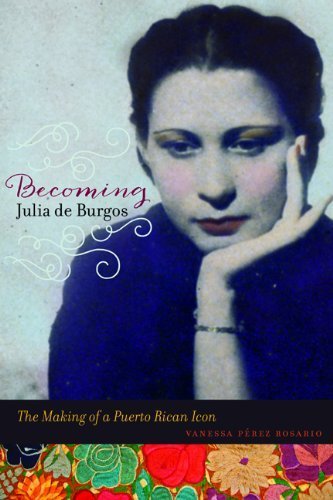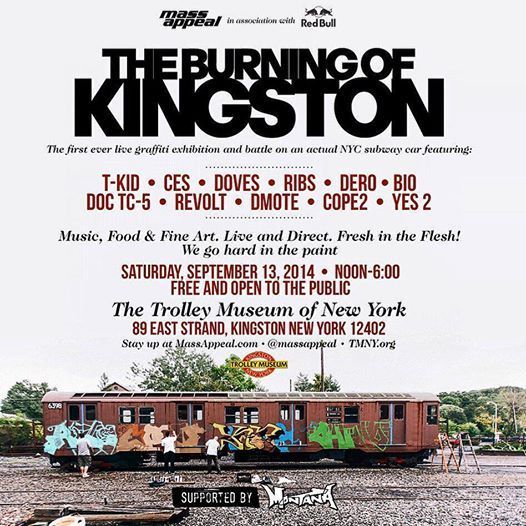Raquel Cepeda's Blog, page 4
November 26, 2014
Conversations #AboutRace at the Brooklyn Historical Society
Forgive me for not posting this sooner—so, in the future, if I don’t post for a while, check out my social media feeds, links on the right hand side under FOLLOW RAQUEL, for wassup with me—but I’m playing catch-up because I’ve been caught up in a mostly awesome whirlwind these past couple of weeks. Below is an event authors Baratunde Thurston, Tanner Colby and myself did last week at the Brooklyn Historical Society. We decided to make the panel a dry run for a podcast I’ll tell you about in the near future. And really, to keep it real, I am surprised CSPAN went ahead and aired this joint, with all the cursing, drinking, and whatnot.
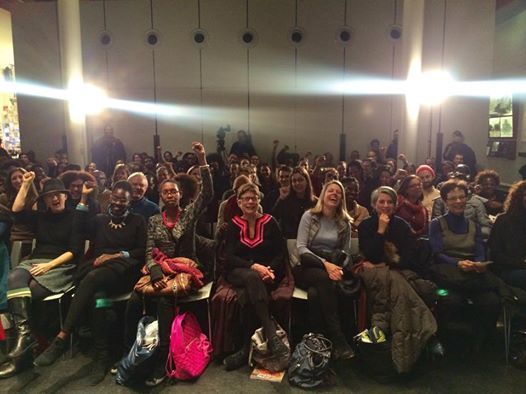
Here, a snapshot of our “amalgamagical” audience in Brooklyn!
So, a Black dude, a white guy and a Latina decided to have a frank conversation about race, and this is what happened. FOLLOW THIS LINK:

November 13, 2014
In Conversation with Author Vanessa Perez Rosario at El Museo Del Barrio
I had the privilege of sharing the stage last night at El Museo del Barrio with author Vanessa Perez Rosario for a conversation about her new book, Becoming Julia de Burgos: The Making of a Puerto Rican Icon. This is only the second biography written about the Puerto-Rican poetess and political activist, and Vanessa’s treatment of de Burgos adds layers of complexity to her life that has left me hungry for more. De Burgos was a woman before her time, albeit a walking contradiction: but its those contradictions that make her accessible to the community, to would-be feminists and artists, alike.
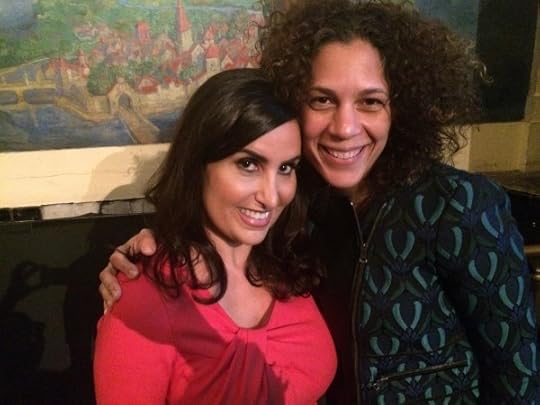
Author Vanessa Perez Rosario sets it off on the left, and yours truly representing for team #naturalcurls, on the right.
There’s a question I didn’t get to ask Vanessa last night that I posed to her this morning, via email, below, about identity being a process, something that cannot be contained.
QUESTION: The title of your book, Becoming Julia de Burgos, to me at least, hints at her self and identity never truly being settled. She is still in the process of becoming it seems. And the writers and poets and artists whose works are inspired by her are contributing to that identity, enhancing it, piecing her, Julia’s spirit, together. De Burgos is, like so many of us in the Latino-American community and beyond, fluid, always shifting like the river Loiza she fondly wrote about. Was this title, this becoming, this process rather than arrival, something you did purposefully?
ANSWER: The title Becoming Julia de Burgos has several layers to it. First, it is a reference to the way the book documents how she came to be the writer and artist she was by looking at early literary influences, the development of her political consciousness, and her literary voice. Secondly, it is a reference to her becoming the icon she is today, an icon that is created in part, by those writers and visual artists who inherit and extend her legacy. It also suggests the way that identity is not fixed but always in the process of becoming, of movement, of shifting; it is dynamic, as her poetry teaches us so well. A favorite quote of mine on this topic from Julia’s poetry comes from the poem, below:
“Momentos,”
“Yo, multiple,
como en contradiccion,
atada a un sentimiento sin orillas
que me une y me desune,
alternativamente,
al mundo”
["Moments"
Me, multiple,
as in a contradiction,
tied to a sentiment without edges
that binds and unbinds me
alternately,
to the world.]
[translation. by Jack Agueros from Song of the Simple Truth, pg 14-15]

October 13, 2014
The Greatest Hits from “The Double Whammy” Panel @ #Bindercon…AND THEN SOME

At #Bindercon, from left, Kavita Das, Raquel Cepeda, Ava Chin
Yesterday, I sat on a panel moderated by my new homie, writer Kavita Das, called The Double Whammy: Women Writers of Color Discuss Challenges and Strategies, as part of #Bindercon‘s two day symposium. The panel cleverly featured three writers including myself, memoirist Ava Chin (where have you been all my life?), and novelist Tayari Jones, literary agent Ayesha Pande (who happens to be my agent), and former Atria/Simon & Schuster editor Malaika Adero (who happens to be the editor of my book Bird of Paradise, and one of the .0001% of Black-American women in the publishing industry—until recently. I wonder what the numbers are now?). The panel went down at Tishman Auditorium at NYU’s Vanderbilt Hall: it was cold, damn cold in there!
I mostly dug the audience because, unlike most panels that are billed as focusing on the issues of women of color in publishing, there were women of all races and persuasions in the house. If only publishing were as diverse as the audience, I thought to myself, I wouldn’t have to try and convince so many editors that I exist, that my demo isn’t as niche (i.e. Latina-Americans, and more specifically, those that break away from the formulaic lost immigrant child+white savior English teacher + total assimilation = success and the realization of the American Dream) as they assume it is, and that my story and point of view is shared by many (you’d be surprised at how many white men get my work, ya’ll) Americans.
In other words: Latina-, Black-, Asian-, and Insert-your-fave-color-HERE- narratives are just as important to the social fabric of American Literature as those written by white women.
Ok, so as much as we tried, there was a lot we couldn’t cover in 45 minutes + 15 minutes for questions. I tried to run through my trajectory from disengaged parochial grammar school student, to disengaged high school student, to turned off college student (oh, the stories I could have shared about my university English professors), to circa early-mid ’90s poet, to journalist, editor, author, documentary filmmaker, blah, blah, blah, in a few minutes, but lots got lost in the sauce. I also have a hard time picking and choosing what to prioritize when asked to run through how I became a writer.
In a nutshell, I think I carried the gene, if you will, of a writer and storyteller, in my DNA. If you read my book, Bird…, you’ll understand what I mean (write me if you still don’t and we can discuss.) BUT I technically started writing by pretending I was a ghostwriter for my favorite mid-to-late ’80s emcees while my religion teacher was shoving all the tools for self-loathing down our throats. I was just not buying it.
Moving on, there were a few really poignant writing tips, jewels really, that everyone imparted that I think is important for sisterwriters of all ages and stages of their careers to keep in mind. I listed them in the following pages.
 The novelist Tayari Jones said two things in particular that stood out to me as invaluable: regardless of what is going on in your professional life—even when the naysayers are telling you that your career as a writer is over, you’re a has-been, etc.—keep going, keep moving, keep the faith, keep writing despite the sometimes negative influences threatening to oppress you. Finish whatever you are working on: that work may amplify and take your previous works to the next level. AND don’t be stingy with information, pay it forward. In other words, if you know of a grant or opportunity, post it on your social networks. Share the info. You never know. Someone who you help today may remember and come in clutch (my phrasing) in the future.
The novelist Tayari Jones said two things in particular that stood out to me as invaluable: regardless of what is going on in your professional life—even when the naysayers are telling you that your career as a writer is over, you’re a has-been, etc.—keep going, keep moving, keep the faith, keep writing despite the sometimes negative influences threatening to oppress you. Finish whatever you are working on: that work may amplify and take your previous works to the next level. AND don’t be stingy with information, pay it forward. In other words, if you know of a grant or opportunity, post it on your social networks. Share the info. You never know. Someone who you help today may remember and come in clutch (my phrasing) in the future.
In a nutshell, food memoirist Ava Chin talked about the importance of putting in your dues (again, my phrasing). She wrote a column for The New York Times for free for quite some time before it paid off handsomely. I think that’s perhaps one of the most important
 things said on the panel. Paying dues today is grossly underrated though a great way to meet potential mentors, be seen and heard, and develop your voice and craft.
things said on the panel. Paying dues today is grossly underrated though a great way to meet potential mentors, be seen and heard, and develop your voice and craft.
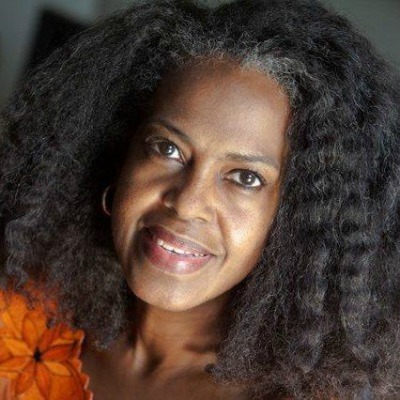 Malaika Adero dropped numerous jewels on the audience. And, honestly, I think an hour devoted to just her and Ayesha Pande would have been invaluable for writers looking for straight talk and practical advice from an agent and editor. Malaika encouraged writers to challenge themselves, to ask themselves, “What is my motivation?” Is it to sell books and jump on trends or to write and document subjects you are passionate about? If it’s the former, then…
Malaika Adero dropped numerous jewels on the audience. And, honestly, I think an hour devoted to just her and Ayesha Pande would have been invaluable for writers looking for straight talk and practical advice from an agent and editor. Malaika encouraged writers to challenge themselves, to ask themselves, “What is my motivation?” Is it to sell books and jump on trends or to write and document subjects you are passionate about? If it’s the former, then…
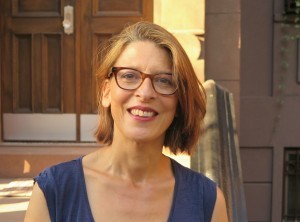 That segues nicely into what (my) literary agent Ayesha Pande said about what moves her to take on a client: passion. Is the writer passionate about the subject he or she is writing about? When reading the nonfiction proposal or novel, does the writer arrest her attention from one page to the next? Is she still thinking about the work the next morning? If so, that’s when she feels like she can do the project justice, by selling the book with the same kind of respect and energy that the writer poured onto the page. The other thing Ayesha mentioned as being crucial to the process is being open to collaborate. I know this from personal experience. If it weren’t for me being open to her critique and suggestions, Bird of Paradise would have never been published. Writers are creative people, sensitive about our shit (to sample Badu), but I promise that being open to constructive criticism, improving your craft, and a little patience will go a long way.
That segues nicely into what (my) literary agent Ayesha Pande said about what moves her to take on a client: passion. Is the writer passionate about the subject he or she is writing about? When reading the nonfiction proposal or novel, does the writer arrest her attention from one page to the next? Is she still thinking about the work the next morning? If so, that’s when she feels like she can do the project justice, by selling the book with the same kind of respect and energy that the writer poured onto the page. The other thing Ayesha mentioned as being crucial to the process is being open to collaborate. I know this from personal experience. If it weren’t for me being open to her critique and suggestions, Bird of Paradise would have never been published. Writers are creative people, sensitive about our shit (to sample Badu), but I promise that being open to constructive criticism, improving your craft, and a little patience will go a long way.

Photo credit: Rob Northway
Finally, there’s me. There are a couple of nuggets I threw out to the audience and some I couldn’t because of logistics:
I said to learn how to take a right/left hook to the face and counter. You have to learn how to take a blow, shake it off, learn from it, and move forward. I still remember, almost word for word, one of the worst professional conversations I’ve had to date with Ayesha (my agent). A couple weeks before my book was released, she relayed the disastrous news that Barnes & Noble cancelled every physical copy of my book nationwide. BACKSTORY HERE. Anyways, I remember imploding, sitting there and thinking about my ill-fated book. I decided, right there and then, to do everything I could to promote it, and I did just that. BUT…
Sometimes we make plans and the universe laughs. So what do you do when you’re on Melissa Harris-Perry and your book is illuminated and people want to go out and buy it and they run over to Barnes & Noble and then they tweet you and FB you and email you that they couldn’t find it and I respond by trying to explain the issue and pointing them to online outlets (I know what you are asking—What about indie bookstores?—but to keep it real most indies will order depending on how well it’s moving in the bigger stores)? People forget, they move on to the next thing, book, whatever is accessible and available now, now, and now! What do you do? What I did was keep trucking. AND…
Exercise is underrated. But, no joke, if it weren’t for boxing I don’t know that I would have had the energy to keep moving forward and getting up time and time again. The ability to exorcise the negativity that threatened to throw me in a hole at every turn was invaluable. Boxing fed my soul, my body, my spirit. It gave me an outlet and—I gave birth to my son Marceau six days before turning in my manuscript—my body back, and then some. Exercise is the gift that keeps on giving and a salve for the soul. Move, move, move. A static body = a static mind. Who wants that? SO…
With that said, you must do your part, your best, in putting your work out there. And that means learning all you can about the business of selling books. What do I mean? Here are a few things I’ve learned so far: fatten up your address book with editors and tastemakers; be present and spend some time each day social networking; don’t wait for your assigned book publicist to become motivated to pitch human interest stories and excerpts to media outlets. Provide the publicist with the tools she or he needs to pitch you like a list of 5-7 angles, names of editors you know personally (though that doesn’t insure coverage), and festivals you want to participate in. Trust me, just because a publicist has been assigned your book to work it doesn’t necessarily mean that he or she likes your work. And like Ayesha said, the only way to pitch a writer is to share their enthusiasm and passion (drinking word!) for their work so if your publicist isn’t riding for you, well, don’t fret. Come up with a game plan with your agent. SPEAKING OF WHICH…
It’s important—I can’t stress this enough—that you pick your agent as wisely as you would a life partner, wife, husband, etc. Not every agent and writer relationship is well-suited. Don’t be seduced by big names and fancy titles. Be with someone who wants to be with you, someone who shares your worldview and—DINGDINGDING, passion (are you drunk yet?)—for your work. Ideally, you want to grow old and wise with your agent. ALSO…
Read everything you can get your hands on. I’m currently re-reading (or just reading) books and authors that were assigned to me during college. I wasn’t into it back then but I am re-discovering authors (Kurt Vonnegut, Ibaye, I love you man) I hadn’t given much thought too back then. I learned how to develop my voice by seeing how others did it on the page (Currently, I’ve been looking through old issues of The Village Voice which I think had some of the best writing, especially about music and culture, throughout the ’90s-00s). FOR NOW…
I will leave you with this: Don’t be afraid of marginalization. If you are passionate (Ok, I hope you’re not driving…) about your mission work, your writing, developing your craft, taking chances, others will feel it. And if some don’t right now, who cares?

October 3, 2014
Latino Studies Journal Review of “Bird of Paradise: How I Became Latina”
I was delighted to find that my book, now out in paperback, was reviewed in the Autumn 2014 issue of the (otherwise academic) Latino Studies journal. I’d like to send a special shout-out to Ms. Kiley Guyton Acosta, PhD., for the thoughtful deconstruction of the themes in my book. Check it out, below.
NOTE: And on another subject, my site was hacked about a month ago. I’m hoping we have successfully and permanently cleaned up the virtual mess because I’ve not been able to update my site or speaking engagements, some of which have passed. Check back soon for updates and please send me some positive hack-proof energy!

September 15, 2014
You Too Can Jumpstart Latino History Month(s) By Buying Yourself the Gift of Knowledge
Ok, full disclosure: Someone actually reminded me that it’s Latino History Month. I forgot that today was the official kick off until a homegirl sent me this really sweet Buzzfeed article. I was on the site earlier today but missed the piece because I was dumbstruck by Urban Outfitters latest low, the hawking of a “vintage Kent State” sweater with red stains reminiscent of splattered blood. I was like WTMF?! They are already known for allegedly cold-jacking young and lesser known designers, but this?! Wow.
Back to Latino History Month. I don’t think our history should be crammed down students throats for a month year. And, you know, the stories are all the same one-note narratives about how the Latino/as who found true success here in North America did so by the grace of total assimilation and acculturation into the perceived mainstream. We are way more complicated than that, yo. Latino history is American history. I mean that literally. The New World as we know it began in Santo Domingo, for better and for worse. I wrote about it in my book Bird of Paradise: How I Became Latina. Do yourself a huge favor and buy it. Even if you don’t identify with my personal coming-of-age story, I guarantee that it will be the most illuminating thing you learn during this Latino History Month(2) 2014. My word is bond.
Inspired by the #WhatLatinoMeansToMe hashtag partay, I decided to join in on the fun and make my own signpost because, really, shouldn’t we meet folks where they’re at?
(PS: Shout out to my homeslice, author and educator Jose Vilson for helping me getting my site back up yesterday after I was alerted that it had been down all weekend: couldn’t do it without you, bro!)

September 11, 2014
Mass Appeal X Red Bull: First Ever Live Graffiti Exhibition & Battle
Honoring Those Who Perished on September 11, 2001
Light, peace and progress to the spirits of all those who perished on September 11, 2001. I would like to think we are honoring the dead by living life to the fullest: by approaching everything with an open heart and clean hands; by not sweating the small, petty ish; by eating clean and moving our bodies every day in order to extend our lives here on earth; by being the change we want to see in the world; by being caring and responsible global citizens. I’d like to think we’ve done that to our best abilities.

August 23, 2014
I Remember Yusuf Hawkins
The savage murder of Yusuf Hawkins in Bensonhurst, Brooklyn, is one of those watershed moments of my youth I recall almost every time someone asks me what it was like to grow up nonwhite in New York City during the ’80s. Hawkins was only 16 when Keith Mondello rounded up a mob of bloodthirsty white boys armed with bats, golf clubs, and guns, all feigning like baseheads to unleash their rage on Hawkins and a couple of his friends. What were they doing in Mondello’s ‘hood on the evening of August 23, 1989, in the first place? They were looking to purchase a used car. That was it.
Hawkins was less than three months older than me. While the Reverend Al Sharpton lead protests (and at one point was stabbed in the chest for taking a stand), and the press coverage on the racially fueled murder made for prime time media fodder, I went on living my life riding on a tidal wave of nervous energy. I felt, intrinsically knew, that the people in my community, the grownups in my city (at least those running things), didn’t place to much value on whether we lived or died: our lives were dispensable.
Twenty-five years later and one Black president richer, not much has changed in our pre-post-racial-society. Young Black and Brown men and women are still being hunted down and sacrificed like animals. People still mobilize, continue to rage and protest, amplify the issues on social media, and eventually return to relative normalcy until the next unjust murder occurs.
It’s excruciating to watch these events unfold time and time again. It’s painful to see our children’s lives and potential wasted over nothing (or because of the lack of social capital). It’s incensing as ever to see people argue in circles and soundbites on television about something so clearly wrong and waste time debating shit that is so clearly one-sided. What’s worse, at least from where I stand, is that we are still mostly looking at race in America through a binary Black-and-white lens, further alienating and dividing groups of people—ie, Latino-/Hispanic-Americans and other Diasporic folks—from the national conversation. Divided, there’s little we can conquer.
On my train ride back uptown from sparring this morning, I tried not to think about the bigger picture or most of what I wrote above. I took those moments on the A train to become still, to fall in line with the rhythm of the vibration underneath my feet, and direct all my intention to one person: Yusef’s mother, Diane Hawkins, who continues to suffer the senseless and tragic loss of her son every single day. A mother’s pain is abysmal, it’s deeper than a bottomless ocean, a thousand lashes on one’s soul. It’s totally fucked up.
Light, peace and progress to the spirit of Yusef Hawkins.

August 16, 2014
Fear and the Afterlife in Aruba: My Personal Journey in The New York Times (and Photos!)
We had been in the lobby of our hotel in Oranjestad, Aruba’s capital, for only a few minutes when the Dutch territory’s Arcadian “One Happy Island” front was shattered by a desk clerk whose petulance hit me like a left hook straight to the temple. As she delivered the rules and regulations like a stern lecture, scolding my daughter and me for the simple offense of standing before her, my mind drifted back home to New York City. There I was, at Mendez Boxing gym, and there she was, standing in place of my favorite heavy bag.
Eventually, spurred by my husband, Sacha, she produced a set of room keys. But when we finally made our way down the spare beige hallway and into a room facing the busy boulevard (with dingy beds smaller than advertised), I realized I was relieved to have seen the front desk clerk’s vitriol. It countered the tourism board’s Stepford-ian remake of Aruba. And that was a good thing.
CONTINUE READING THE STORY HERE.
BELOW ARE SOME PHOTOS FROM OUR TRIP, MOSTLY TAKEN BY DJALI BROWN-CEPEDA.
COPYRIGHT, 2014.
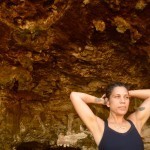






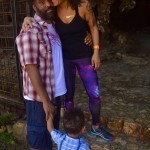

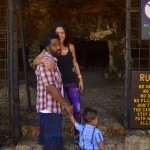




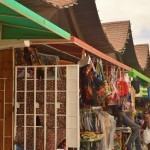

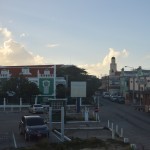


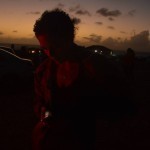

August 12, 2014
The God Hour
Every early morning, on my way to the gym, I take a few moments to thank the Forces of Nature and our Supreme Friend for the major and seemingly minor things in life. Today, as I was walking up the block and praying for our global family in Iraq, Gaza, Missouri, and West Africa, for Michael Brown and all of our endangered Black and Brown boys and girls, I didn’t expect to see this sight when turning the corner. THIS picture doesn’t capture the majesty of what I saw hovering above me. What I took away from this sighting was not to give up on my global and local community. For every thug, every terrorist, every dirty racist cop, every unjust soul in the world, there will also be beauty and peaceful moments we can harness aché from.


